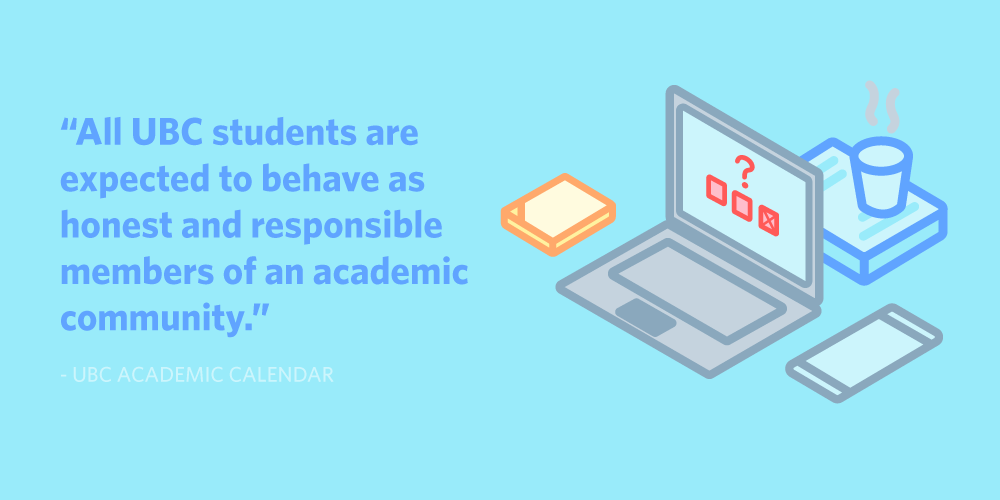Make sure you’re on the right side of academic integrity
October 14, 2025

October 14, 2025

Would you know academic misconduct if you saw it, or have you worried that you were doing it? It's not always the old-fashioned example of looking at another student's test; in this online world, academic misconduct can happen in many forms, as outlined in the Academic Honesty and Standards and Academic Misconduct policies in the UBC Academic Calendar.
According to the Calendar, academic misconduct includes any conduct by which a student gains or attempts to gain an unfair academic advantage or benefit thereby compromising the integrity of the academic process, or helping or attempting to help another person commit an act of academic misconduct or gain, or attempt to gain, an unfair academic advantage.
Examples of academic misconduct by a student include, but are not limited to:
Whether you're taking a final exam in a gymnasium with 100 people or you're behind your laptop in your bedroom, the rules for ethical behaviour during exams don't change.
You can face tough consequences if you violate any of the rules listed in the Student Conduct During Examinations policy.
If you have been contacted to indicate that your instructor wants to discuss an irregularity in your assignment or that you are suspected of having committed academic misconduct, learn more about what happens next.
Maintaining academic honesty is the easiest way to succeed at UBC and is at the crux of what you came here to do – learn. Don't share your work with classmates or help each other take tests. Don't be tempted by websites or tutoring companies that promise you solutions to your assignments or exams. Don’t participate in a study group that demonstrates unethical behaviours, such as obtaining exam answers, collaborative test taking, or copying assignments (among others).
Do thoroughly read the academic integrity policy in each course syllabus. Do start your assignments early to avoid last-minute rushes. Do use the resources provided by your instructor, like office hours, and do seek clarity on assignment or exam instructions if unclear. Do form study groups with classmates to help each other learn the course material before the exams while maintaining academic integrity. Do turn off all other programs (including iMessage and other communications and messaging platforms) on your laptop and other devices while you're writing your exam.
If you've read this article you should be well-informed about academic integrity, but if you're still not sure about what's right or wrong, or how to navigate a difficult situation that may lead you to violations of academic integrity, ask your instructor or speak with the Office of the Ombudsperson for Students.
We are committed to identifying all cases of academic misconduct and taking the necessary disciplinary action as appropriate. We are currently using all of the means at our disposal, including a variety of software tools to identify cases of plagiarism, cheating and “contract test taking.”
You are encouraged to report any instances of academic misconduct by emailing academicintegrity@science.ubc.ca. Any information about potential academic misconduct will be treated as confidential and shared only with course instructors and relevant parties. For more information about UBC's official policies, view the Academic Honesty and Standards and Academic Misconduct policies.
To learn more about why academic integrity matters visit UBC’s Academic Integrity website.
We honour xwməθkwəy̓ əm (Musqueam) on whose ancestral, unceded territory UBC Vancouver is situated. UBC Science is committed to building meaningful relationships with Indigenous peoples so we can advance Reconciliation and ensure traditional ways of knowing enrich our teaching and research.
Learn more: Musqueam First Nation